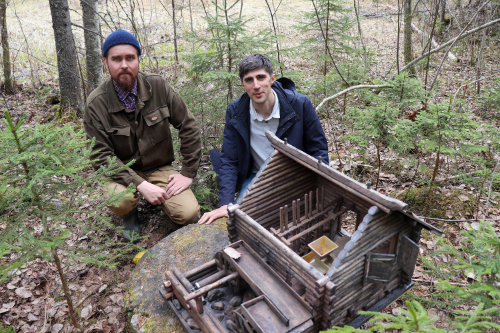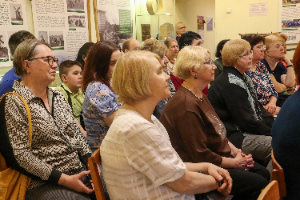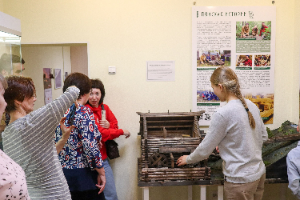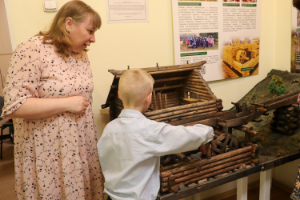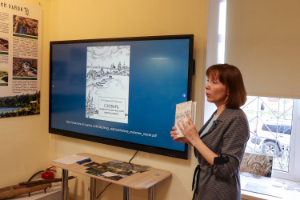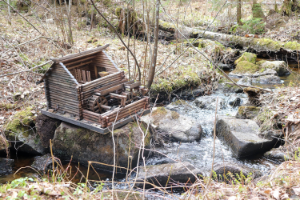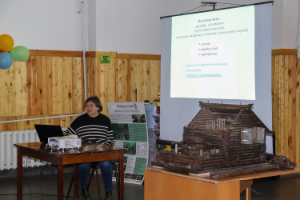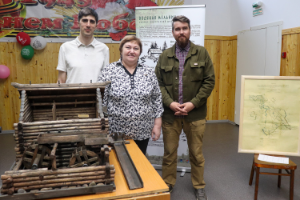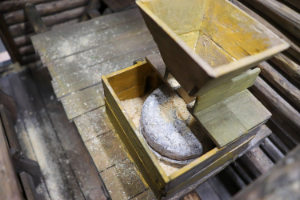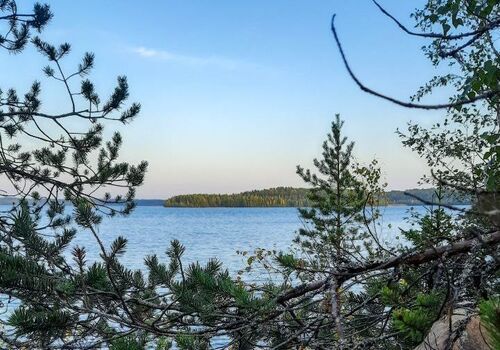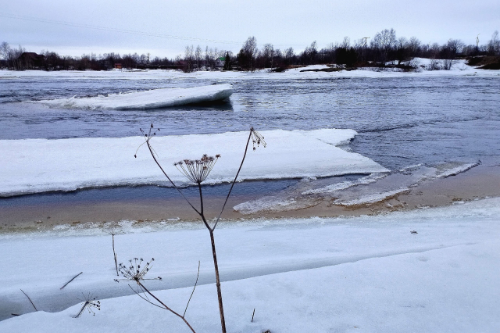The exhibition tells about peasants' mills in Karelia in general and Kondopoga District in particular. Alexander Krivonozhenko, Researcher at the Institute of Linguistics, Literature and History KarRC RAS, specializes on post-reform peasant economy. He said at the opening that the exhibition presents historical information about mills - their structure, their role in the peasant economy and our ancestors' mythological worldview, and many other things, as well as shows archival photographs taken in different parts of Karelia and modern images from the locations of mills - both preserved or reconstructed and ruined ones. Some of them are works by Igor Georgievsky, a Karelian photographer, employee of the KarRC RAS and the Kizhi Open Air Museum.
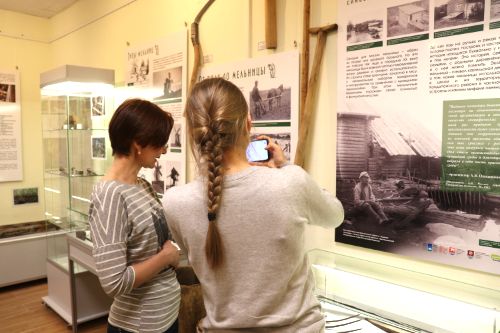
First visitors of the exhibition
The centerpiece of the exhibition is an architectural and landscape model (mock-up) of a watermill that actually existed and belonged to peasant Ivan Martynov from the village of Käppeselga. The 1:10 scale model was made by scientists based on the measurements taken during the 1916 agricultural census and preserved in the Republic of Karelia National Archives. To create the landscape component, including the mill dam and the flume which originally channeled water to the water wheels, the area where the mill used to stand was surveyed.
– The trick was to make the model interactive so that museum visitors could set its mechanism in motion themselves. This is interesting both for adults and especially for children, helping to popularize history and peasant architecture most effectively, – remarked the mock-up maker Vladimir Karpin, Researcher at the Forest Research Institute KarRC RAS.
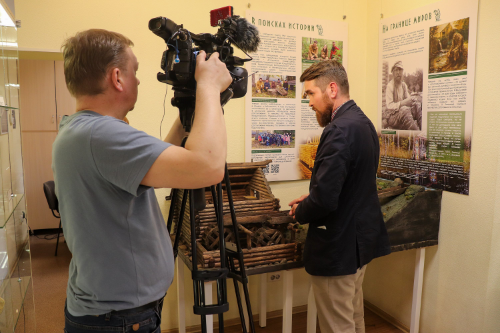
Vladimir Karpin, Researcher of the Forest Research Institute KarRC RAS, tells about the mock-up design
A task set and accomplished in this work was to reproduce some of the historical technologies and materials. In particular, wood of different species (pine, spruce, birch) was used in the mock-up. Thanks to advice and practical assistance from staff of the Institute of Geology KarRC RAS, millstones were made from granite mined in a deposit in Karelia.
The project activities included educational meetings with children and adults in the Kondopoga District and Petrozavodsk, making of media products, including a documentary “Mills of Karelia”. Simultaneously, scientists took several field trips to mill locations. As a result, about 20 exhibits - parts of the mechanism and tools - were collected and handed over to the museum. One of the most notable exhibits is a fragment of the flywheel shaft on which the water wheel was mounted. The historian discovered it on the ruins of a mill near the village of Yurkostrov. Even after about a century of being practically immersed in water, parts of the wooden part with a metal spike and rim have survived.
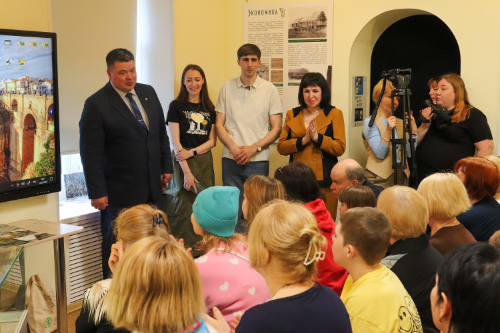
At the exhibition launch: Head of Kondopoga District Administration Dmitry Zatsepin, KarRC RAS Science Communicator Maria Dmitrieva, Researcher of ILLH KarRC RAS Alexander Krivonozhenko, and Director of the Museum of the Kondopoga Land Olga Lokteva
According to Olga Lokteva, Director of the Museum of the Kondopoga Land, there are about 40 exhibits on display. Half of them are items from the museum's holdings.
– The collaboration with the Karelian Research Center RAS gave us an opportunity to review and update the permanent exhibition dedicated to Ludic Karelians. After the exhibition “Watermill: a Symbol of the Karelian Countryside” is closed, the architectural and landscape model from the exhibition will also be included in the permanent exhibition, – the Director said.
Speaking at the opening in his turn, the Head of the Kondopoga District Administration Dmitry Zatsepin thanked the museum for the new exhibition and the scientists for the work they presented to people of the district.
– The symbiosis of science and culture provides us with completely novel information about the history of the place where we live, – noted Dmitry Zatsepin.
The exhibition will be open to residents and guests of Kondopoga until the end of September.
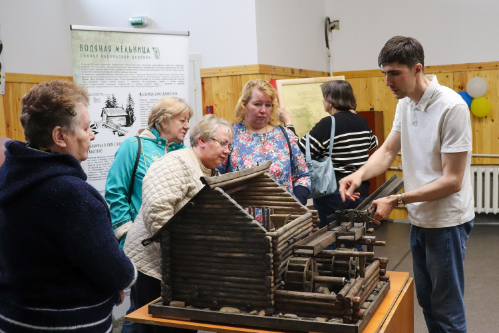
At the presentation in Village Käppeselga, Kondopoga District, Republic of Karelia
Another presentation of the project results was held on May 17 at the Culture and Leisure Center of Käppeselga village, Kondopoga District, near which the reconstructed watermill used to stand. Both events included lectures by scientists from different KarRC RAS units. In Kondopoga the project participants were joined by Ekaterina Zakharova, Senior Researcher at the Institute of Linguistics, Literature and History KarRC RAS, who gave a lecture on the toponymy of the area, and in Käppeselga by Galina Borodulina, Senior Researcher at the Northern Water Problems Institute KarRC RAS, who familiarized local residents with the topic of groundwater, which is of high relevance to them.
– Although formally the project “Watermill: a symbol of the Karelian countryside” ends in late May, we will continue working on this topic. We believe that one of the main outcomes at this stage of the work is the interest it has sparked among residents of Karelia and beyond our region: we receive lots of messages from people who are curious about mills in their settlements and reports of places known to them. This proves that history is closer than it seems. There is a lot of work ahead, – summed up the historian Alexander Krivonozhenko.




